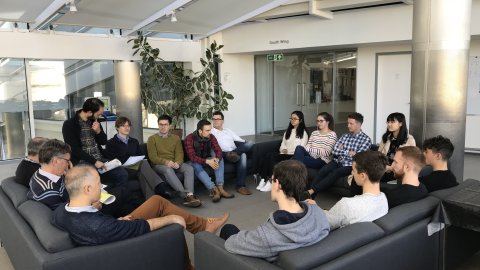16:00
Quasi-locality and asymptotic expanders
Abstract
Let $X$ be a countable discrete metric space, and think of operators on $\ell^2(X)$ in terms of their $X$-by-$X$ matrix. Band operators are ones whose matrix is supported on a "band" along the main diagonal; all norm-limits of these form a C*-algebra, called uniform Roe algebra of $X$. This algebra "encodes" the large-scale (a.k.a. coarse) structure of $X$. Quasi-locality, coined by John Roe in '88, is a property of an operator on $\ell^2(X)$, designed as a condition to check whether the operator belongs to the uniform Roe algebra (without producing band operators nearby). The talk is about our attempt to make this work, and an expander-ish condition on graphs that came out of trying to find a counterexample. (Joint with: A. Tikuisis, J. Zhang, K. Li and P. Nowak.)



